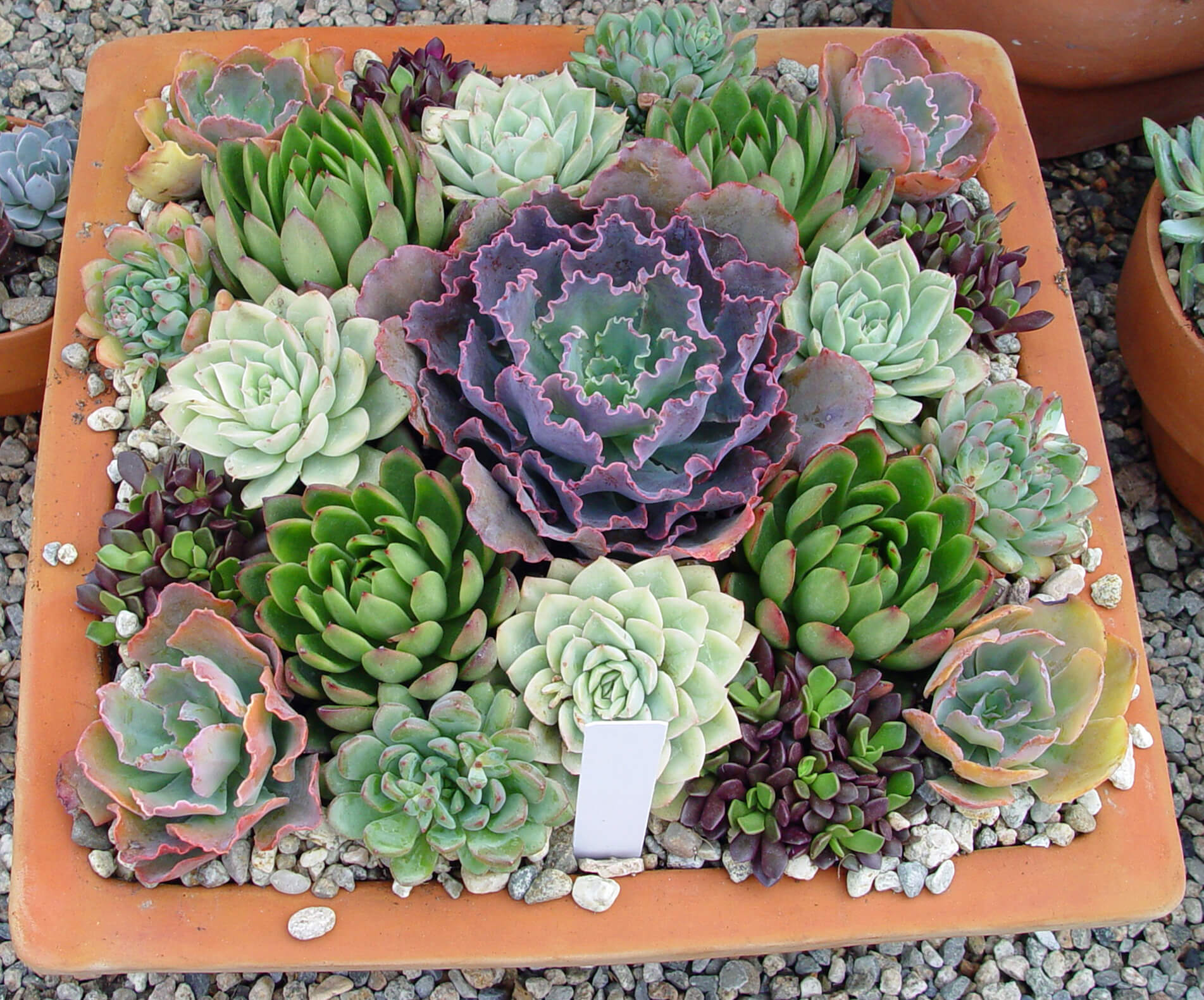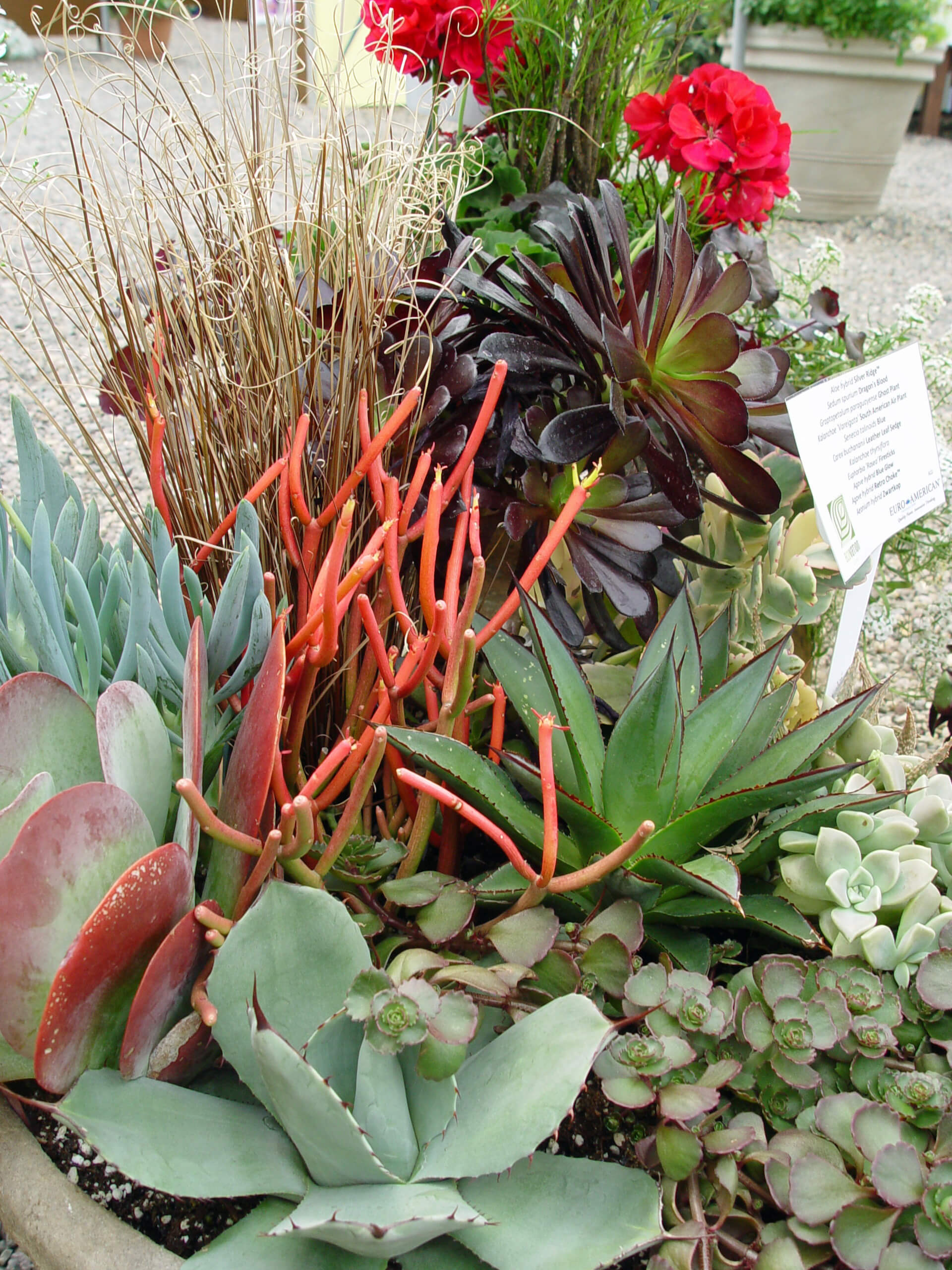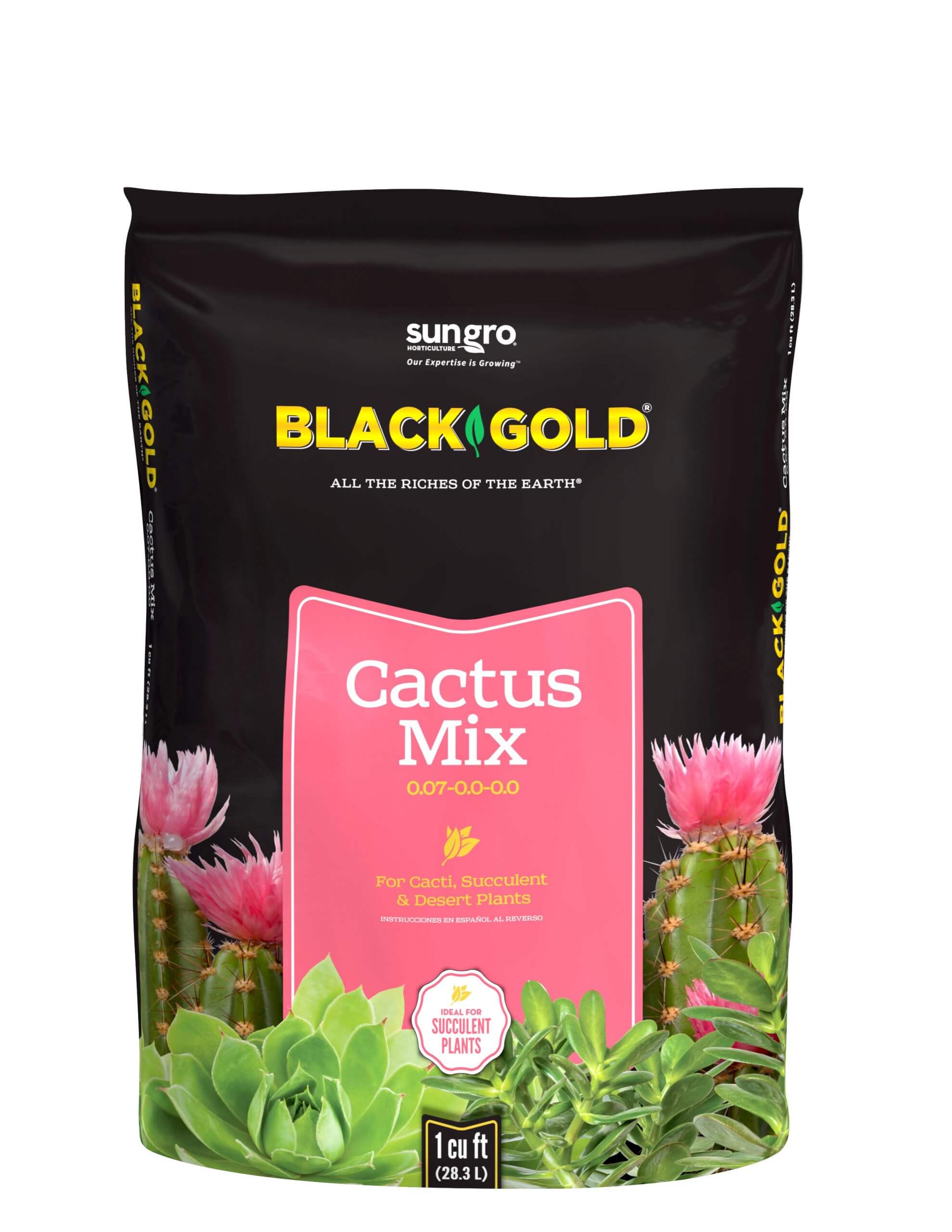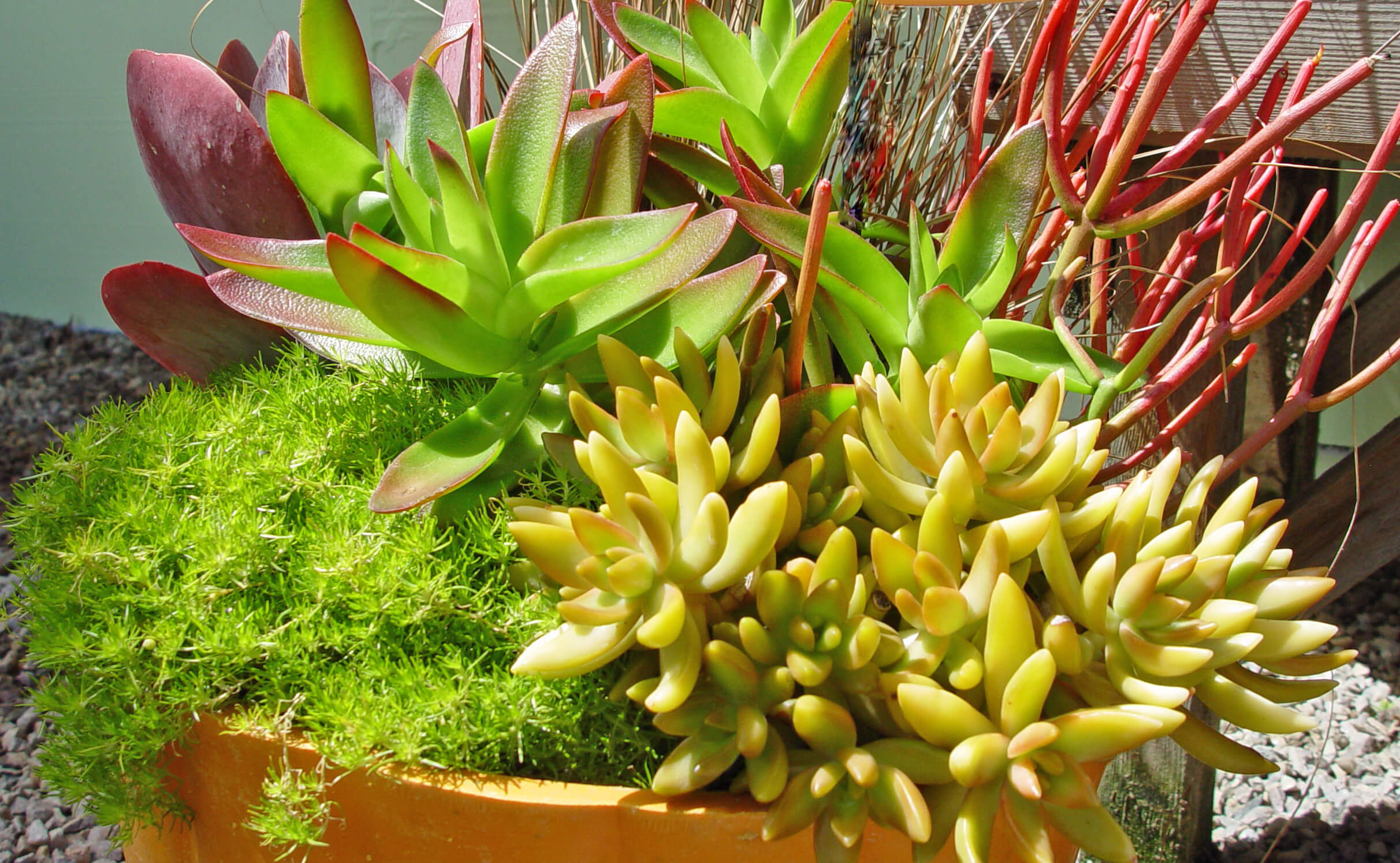
For parents, back to school season is the happiest time of year. Finally things slow enough to spruce up the garden for fall. But what to do when food plants and flowers are going to seed at summer’s end? Try some experiments with colorful late season succulents in pots to give outdoor living spaces a contemporary feel. When cold nights arrive, just bring them indoors to decorate your home all winter long.
Designing Succulent Pots
You’ve seen them everywhere, those fabulous pots stuffed with vibrant succulents. They look great on tables or arranged on a sunny deck, balcony or window. And, growing and overwintering success is easy. Start by selecting a lightweight pot (with large drainage holes) that is easily carried in or out, and fill with porous Black Gold Cactus Mix potting soil, which provides the ideal root zone environment. Then pick out an array of unique succulents from the garden center, and get planting.
-

In this composition you can readily see the upright plants, strong rosette forms and cascading edge plants. - To achieve the trendy looks of decorator showrooms, select succulents that represent three different forms. First are upright branching types like Euphorbia ‘Firesticks’ or Portulacaria jade trees. Second are the rosette forms of cold hardy Sempervivum and Echeveria varieties. Third are crawlers, such as Senecio string-of-pearls and cascading groundcover sedums that hang off pot edges.
 A pot with a balanced design will have one or more of these three forms, but the actual plants you select will define your personal creation. Shop by foliage color for vivid hues that give your composition punch without flowers. For more subtle effects, select pastel shades for a perfect match to your interior color palette.
A pot with a balanced design will have one or more of these three forms, but the actual plants you select will define your personal creation. Shop by foliage color for vivid hues that give your composition punch without flowers. For more subtle effects, select pastel shades for a perfect match to your interior color palette.
Planting Succulent Pots
The best succulent pots are created by packing young plants tightly into the container. Generally speaking, succulents plants don’t resent crowded conditions, so purchase good sized individuals that are in scale with the size of your pots for eye popping effects on day one. Fill tiny gaps between root balls with Black Gold Cactus Mix. It’s best to wait a few days to water them in so that any broken stems or roots can heal over with a waterproof callus. This ensures that exposed tissues are not exposed to waterborne diseases that cause rot. (This is a succulent gardening basic; to protect fresh cuts/breaks during the planting process.) And don’t worry about not watering, succulents won’t wilt if not promptly watered.
Finished pots should be given plenty of light, a cool winter environment and light water. As days grow shorter and cooler, be aware that succulents don’t need much additional moisture because there’s less loss to evaporation. The cooled, drier conditions of fall will demonstrate just how long moisture can remain in the soil. Succulents will truly thrive through winter with little to no supplemental water while excess water can kill them.
If you’ve been dying to jump into succulents for the first time, late summer is a good time and slower season to start. It’s also more affordable because not only will they make your fall garden sizzle, you’ll enjoy them all winter too. This is economy we can all live with, and if well cared for, they’ll be ready to go back outdoors when it warms up again next year.


